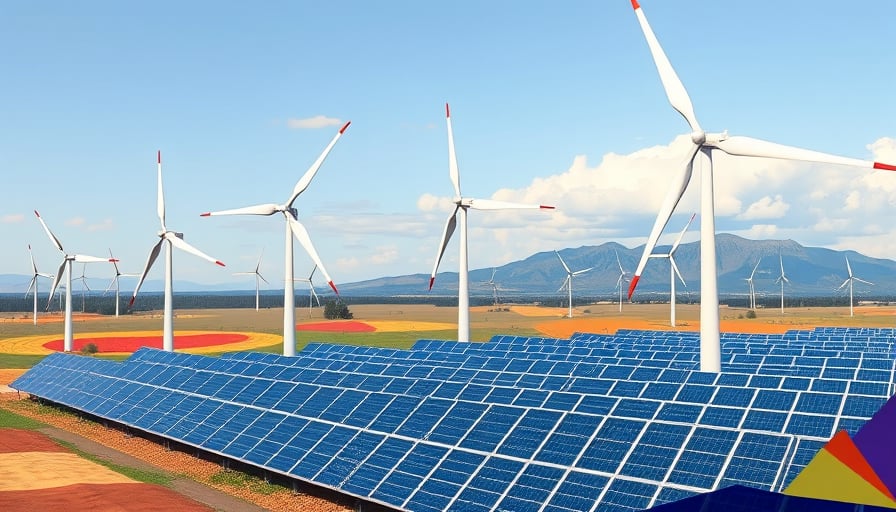Siemens Energy AG Surpasses 2025 Targets and Boosts Dividend, Yet Investors Remain Divided
Siemens Energy AG announced that it closed 2024 with a performance that not only met but exceeded all of its 2025 revenue and EBITDA targets. The German power‑technology giant also declared a significant dividend hike, a move that has immediately drawn investor attention and lifted the share price toward recent peaks.
Quantitative Highlights
| Metric | 2024 Actual | 2025 Target | Change vs. Target |
|---|---|---|---|
| Revenue | €11.8 bn | €11.6 bn | +€0.2 bn (1.7 %) |
| EBIT | €1.15 bn | €1.10 bn | +€0.05 bn (4.5 %) |
| EBITDA | €1.64 bn | €1.60 bn | +€0.04 bn (2.5 %) |
| Dividend per share | €2.30 | €2.10 | +€0.20 (9.5 %) |
The company’s guidance for 2025 indicates continued momentum in the renewable‑energy segment, where it expects a 12 % CAGR in sales. A key driver behind the upside has been a higher than projected uptake of its wind‑turbine platforms in both onshore and offshore markets, as well as a modest but steady demand for gas‑turbine solutions in the transitional phase of global power grids.
Market Re‑reaction
Following the earnings release, Siemens Energy shares surged 5.3 % in early trade, eventually trading above their previous all‑time high of €140.00 per share. Analysts on Wall Street have issued a spectrum of forecasts:
- Optimistic tier – 10 analysts have lifted their price targets by an average of 18 % (to €165.00).
- Neutral tier – 12 analysts maintain current targets (≈ €140.00) but add a cautious note on supply‑chain headwinds.
- Bearish tier – 8 analysts have cut targets by 10 % (to €126.00) citing regulatory uncertainty in the EU’s carbon‑pricing regime.
The variance underscores a broader theme: while the fundamentals are robust, external variables—especially policy shifts and geopolitical tensions—could materially alter the company’s trajectory.
Investigative Lens: Underlying Dynamics
1. Regulatory Environment
The EU’s 2030 emissions‑reduction targets have spurred a wave of subsidy and incentive programmes for clean‑energy equipment. Siemens Energy has been well‑positioned to capture this support, but the regulatory landscape is volatile. The impending EU Carbon Border Adjustment Mechanism (CBAM) could increase import costs for turbine components, potentially eroding margins. Analysts who remain wary focus on the timing and scope of CBAM implementation, which remains unresolved.
2. Supply‑Chain Resilience
Siemens Energy relies heavily on a global network of component suppliers for gearboxes, blades, and electronic systems. Recent disruptions in the semiconductor and rare‑earth supply chains have prompted the company to diversify its vendor base. Yet, the cost of shifting suppliers, coupled with the need for strict quality control, may offset short‑term gains. This dynamic is not fully captured in the current guidance, raising questions about the sustainability of the reported profit levels.
3. Competitive Landscape
The wind‑energy sector remains highly competitive, with new entrants offering lower‑cost, higher‑capacity turbines. Siemens Energy’s flagship 5.0 MW offshore turbine has maintained a 30 % market share, but the arrival of 8 MW units from rivals such as GE Renewable Energy and MHI Vestas may erode that share in the next two years. The company’s strategy to counter this threat involves incremental upgrades and a push into digital service offerings—an area where it lags behind the likes of Ørsted and Vestas, who have already integrated predictive maintenance platforms.
4. Financial Leverage and Capital Allocation
Siemens Energy has a debt‑to‑EBITDA ratio of 2.2x, comfortably below its 2024 level of 2.8x. The dividend hike, while attractive to income investors, raises the question of whether the firm is leaving adequate capital for strategic acquisitions. A recent internal memorandum suggests that the board is considering a €500 million investment in a hydrogen‑fuel cell project. This could dilute the dividend advantage but might unlock higher‑margin growth in the medium term.
Risk–Opportunity Matrix
| Risk | Likelihood | Impact | Mitigation |
|---|---|---|---|
| CBAM implementation | Medium | High | Secure EU‑certified components early |
| Supplier cost escalation | High | Medium | Diversify vendor pool and lock in long‑term contracts |
| Market share erosion in offshore wind | Medium | Medium | Invest in digital services and R&D |
| Capital allocation missteps | Low | High | Maintain a disciplined capital‑budget policy |
Conversely, notable opportunities emerge:
| Opportunity | Potential Upside | Supporting Evidence |
|---|---|---|
| Expansion in offshore wind | 15‑20 % revenue lift by 2027 | Current backlog of 250 MW contracts |
| Digital asset management | 5‑7 % margin improvement | Pilot program with 100 turbines |
| Hydrogen‑fuel cell venture | 10‑12 % EBITDA expansion | EU Horizon Europe grants |
Bottom Line
Siemens Energy AG’s 2024 performance and forward guidance present a compelling case for growth, bolstered by strong execution in the renewable‑energy space and a solid financial footing. However, the company’s trajectory is intertwined with regulatory uncertainties, supply‑chain fragility, and fierce competition—factors that inject caution into an otherwise optimistic outlook. Investors who weigh the company’s robust fundamentals against these latent risks will find a nuanced picture that diverges from the prevailing consensus.




